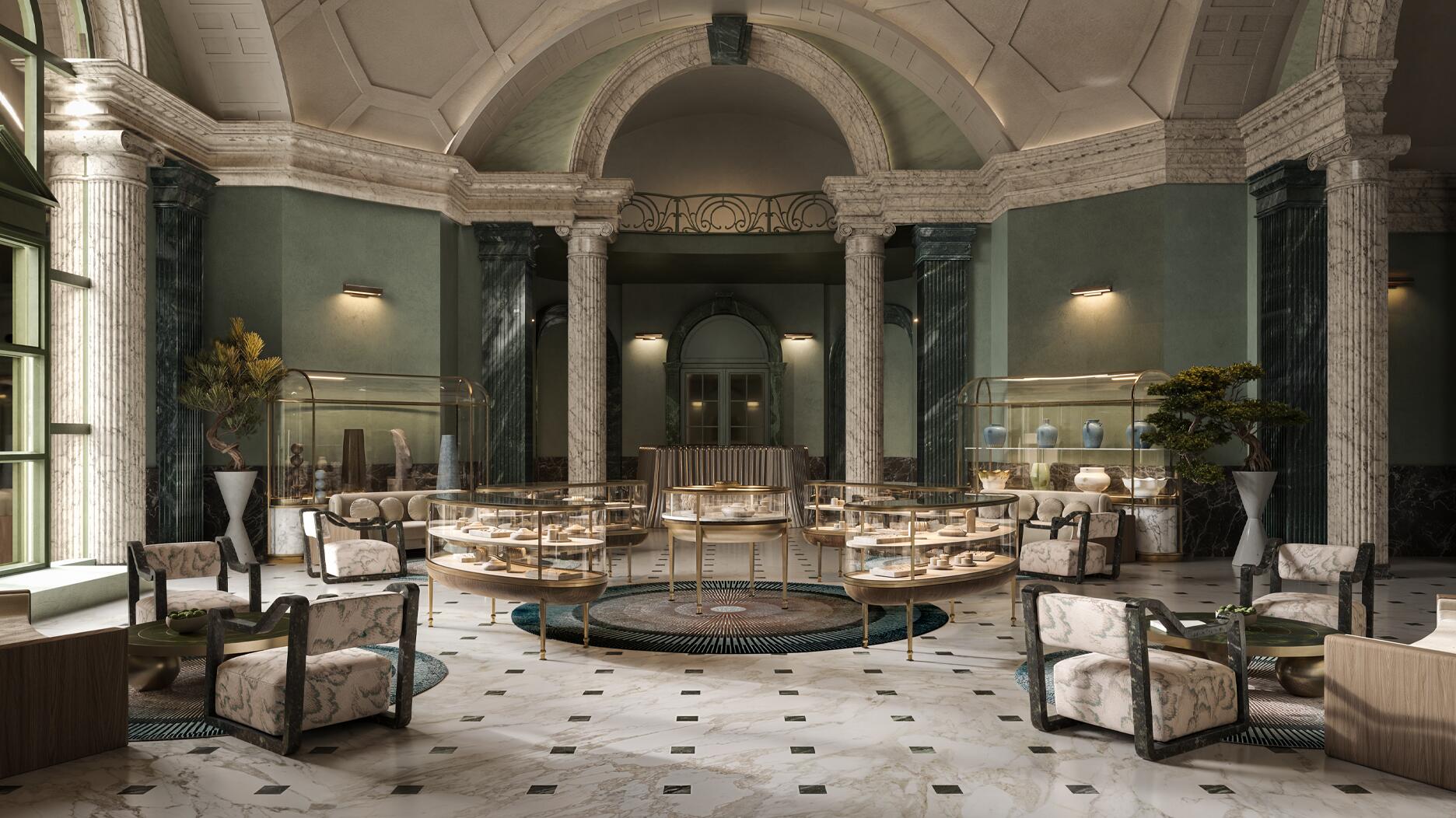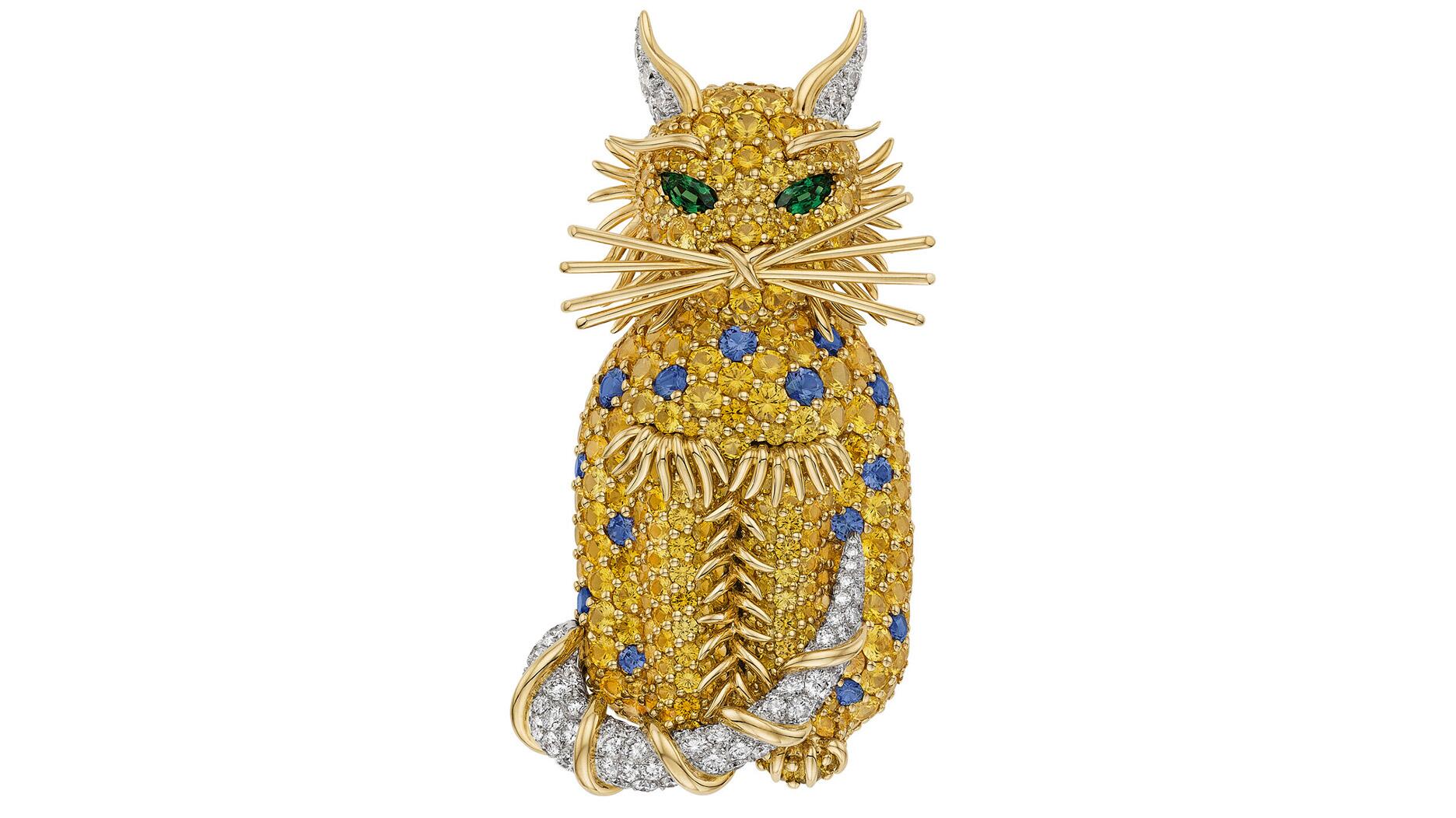23-Carat ‘Golconda Blue’ Heads to Auction
The historic fancy vivid blue diamond set to headline Christie’s Geneva sale next month could sell for up to $50 million.

“The Golconda Blue” is the largest fancy vivid blue diamond to ever be offered at auction, Christie’s said.
It is estimated to fetch $35 million to $50 million.
The diamond, set in a ring designed by JAR, will headline the Geneva Magnificent Jewels sale, set to take place May 14 at the Four Seasons Hotel des Bergues Geneva.

The legacy of Golconda diamonds dates back centuries, with the first reference found in a 4th-century Sanskrit manuscript. They were the first diamonds in the world to be discovered, said Christie’s, mined in the historic region of Golconda in southern India, near present-day Hyderabad.
In 327 BC, Alexander the Great brought diamonds from India to Europe, said Christie’s, and by 1292 AD, Marco Polo had written about their beauty while documenting his travels.
The Golconda Blue boasts a provenance rooted in Indian royalty.
Yeshwant Rao Holkar II, the Maharaja of Indore and a member of the Holkar dynasty, was, with his wife Sanyogitabai Devi, known for his modernist tastes and lifestyle of elegance and sophistication in the 1920s and 1930s.
The British-educated ruler was a Knight of the Order of the Indian Empire. He traveled often and developed an affinity for Western art, design, and jewelry.
In 1913, the Maharaja’s father, Tukoji Rao Holkar III, acquired the Indore Pear diamonds from Chaumet—a famed pair of pear-shaped diamonds weighing, at that time, 46.70 and 46.95 carats.
During another visit to the jeweler in 1923, he commissioned a bracelet set with his own 23-carat pear-shaped Golconda blue diamond.
In 1933, the Mahajara appointed Mauboussin, a French jewelry firm known for its avant-garde designs, as his official jeweler.
Mauboussin reimagined much of the Maharaja's collection, including the Golconda Blue and the Indore Pears, which the jeweler set together into a necklace that was worn by his wife, the Maharani of Indore, memorialized in a portrait by French painter Bernard Boutet de Monvel.

Yeshwant Rao Holkar II also collaborated with Harry Winston, who bought the Indore Pears from him in 1946.
In 1947, Winston purchased the Golconda Blue diamond and set it in a brooch with a matching 23-carat white diamond, which he sold to the Maharaja of Baroda.
The brooch was subsequently reacquired by Winston and resold as a newly designed jewel to its current owner, Christie’s said.
"Exceptional noble gems of this caliber come to market once in a lifetime. Over the course of its 259-year history, Christie's has had the honor of offering some of the world's most important Golconda diamonds, including the Archduke Joseph, the Princie, and the Wittelsbach,” Rahul Kadakia, Christie's International Head of Jewelry said.
“With its royal heritage, extraordinary color, and exceptional size, The Golconda Blue is truly one of the rarest blue diamonds in the world."
Another rare fancy vivid blue diamond, the 10.03-carat “Mediterranean Blue” will also go up for auction next month, estimated to fetch $20 million at Sotheby’s High Jewelry sale in Geneva.
The Latest

The couple pleaded guilty to concealing at least $127 million in cash transactions at its precious metals businesses.

Consumers shared concerns about prices, inflation, tariffs, trade, and politics in the survey’s write-in response section.

The new show will take place Jan. 23-25, 2026.

How Jewelers of America’s 20 Under 40 are leading to ensure a brighter future for the jewelry industry.

The former BHP Billiton leader and Gemfields chairman is remembered for his influential leadership throughout his 50-year mining career.


The LVMH-owned brand has partnered with the costume design union to revamp its award for 2026.

The luxury titan inked a deal to acquire an initial minority stake in the jewelry manufacturer with a pathway to full ownership by 2032.

Roseco’s 704-page catalog showcases new lab-grown diamonds, findings, tools & more—available in print or interactive digital editions.

The company’s curation of unsigned vintage and estate jewelry debuted at the Bloomingdale’s in Costa Mesa, California.

In the recent multi-shipment seizure, CBP also found counterfeit Audemars Piguet, Moncler, and Chrome Hearts items.

Helzberg’s Chief Retail Officer Mitch Maggart shared details about its tests of a new store concept rooted in an elevated luxury experience.

Jewelers of America execs and National Jeweler editors discuss tariffs, the sky-high gold price, and the engagement that broke the internet.

The luxury goods company said founder Ippolita Rostagno will remain at the brand’s helm.

Laura Burdese, who joined the Italian luxury brand in 2022, will take on the role in July.

The National Jeweler editors revisit the most noteworthy industry happenings and design trends from 2025.

It purchased the “Grosse Pièce,” an ultra-complicated Audemars Piguet pocket watch from the ‘20s, for a record-breaking price at Sotheby’s.

The lab-grown diamond grower now offers custom engagement and fashion jewelry through its Kira Custom Lab Jewelry service.

Chandler got his start at Michelson Jewelers and has served as DCA president and CEO since 2001. He will retire at the end of the month.

The boutique is slated to open this week inside Terminal 8, offering pre-owned Rolex watches and more to international travelers.

Sponsored by Digital Monitoring Products

The special-edition egg pendant ingested in a New Zealand jewelry store was recovered after a six-day wait.

Associate Editor Natalie Francisco plays favorites with Piece of the Week, selecting a standout piece of jewelry from each month of 2025.

The “Love and Desire” campaign is inspired by the magic that follows when one’s heart leads the way, said the brand.

Two awardees will receive free tuition for an educational course at the Swiss lab, with flights and lodging included.

Berta de Pablos-Barbier will replace Alexander Lacik at the start of January, two months earlier than expected.

Sotheby’s held its first two jewelry sales at the Breuer building last week, and they totaled nearly $44 million.

Winners will receive free registration and lodging for its fourth annual event in Detroit.




























